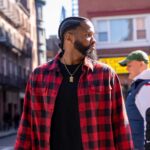
The year 2015 began with Black Lives Matter protests erupting in Boston and cities and towns across the United States. Protesters blocked freeways, occupied shopping malls and did their best to disrupt businesses as usual. Arguably, their efforts were successful, sparking conversations, studies and news media coverage of state violence against blacks, Latinos and Native Americans.
The movement kicked into high gear following the June 17 Charleston, South Carolina church shooting by white supremacist Dylann Roof. Photographs of Roof posing with the Confederate battle flag and other white supremacist symbols generated heated national debate about the display of the stars and bars on public property. When Bree Newsome, an activist affiliated with the National Movement for Black Lives, scaled a flagpole in the South Carolina capitol of Columbia, she became an instant social media hero and ratcheted up the pressure on state officials, ultimately prompting Governor Nikki Hailey to sign a bill authorizing the removal of the flag from state property.
Campus unrest
The momentum of the movement continued into the autumn, when protests flared on college campuses over long-standing complaints of institutionalized racism. Scattered campus protests intensified in November when members of the Missouri State University football team went on strike, demanding that the university president resign after his lackluster response to a string of on-campus race incidents.
Across the country, black college students protested both specific incidents, such as a party at Yale that barred black women from entering, and deeper, structural issues stemming from schools’ racist legacies, like the Princeton school of international affairs named for former President Woodrow Wilson, an avowed racist and KKK supporter.
The Black Lives Matter movement also seeped into presidential politics, with activists from the Movement for Black Lives challenging Democratic candidates Bernie Sanders and Hillary Clinton to hire black campaign workers and incorporate civil rights issues into their platforms. At the other end of the political spectrum, Republican candidate Donald Trump has driven a very different conversation about race, kicking off his campaign with a diatribe against Mexican immigrants and ordering disruptive Black Lives Matter protesters to be forcibly removed from his rallies.
With his racist and sexist rants airing on the national news, Trump has pushed a different conversation around race, one that has had many questioning why whites are drawn to the billionaire landlord’s campaign, with its backward-looking “make America great again” slogan. Some pundits, including Banner Editor Melvin B. Miller, point to the declining incomes and rising rates of substance abuse-related deaths and suicides among white males as evidence the candidate is tapping into whites’ feelings of disempowerment.
Speaking to National Public Radio in December, President Barack Obama also cited the increased numbers of blacks, Latinos and Asians in the U.S. and the declining fortunes of the white working class in explaining Trump’s enduring lead in Republican polls.
“You combine those things, and it means that there is going to be potential anger, frustration, fear — some of it justified, but just misdirected,” the president added. “I think somebody like Mr. Trump is taking advantage of that. That’s what he’s exploiting during the course of his campaign.”
Presidential perspective
A frequent target of white rage, Obama became more outspoken on race issues this year then perhaps at any point during his seven years in the White House. Seemingly emboldened by his success with the Iran nuclear deal and the Supreme Court’s decision upholding his signature Affordable Care Act, the President spoke forcefully about race and advocated compellingly for criminal justice reform, becoming the first U.S. president to visit a prison. In Charleston, he delivered a moving eulogy for the shooting victims culminating with his rendition of “Amazing Grace.”
As 2016 dawns, the Black Lives Matter movement remains strong, in the wake of protests that shut down a major shopping district in Chicago in November and nearly shut down an airport in Minneapolis-St. Paul in December. With the Republican and Democratic primary campaigns in high gear, and the president entering his last year in office, issues of race, discrimination and criminal justice likely will remain front and center.







